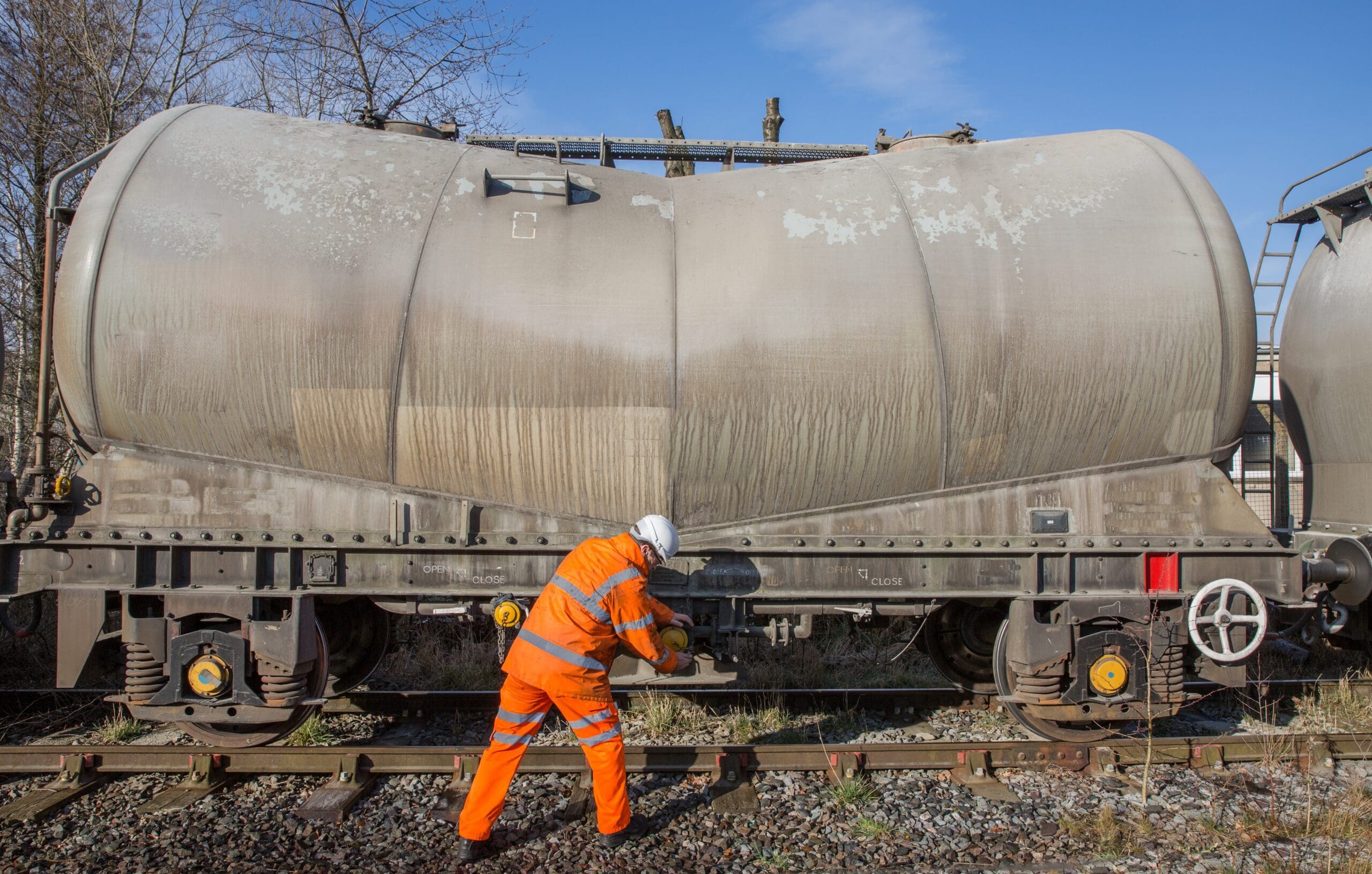Union Pacific Houston Cancer — Is Creosote Still Affecting Houstonians?
For decades, neighbors in Houston’s Fifth Ward have argued the company hasn’t done enough to remove creosote in the underground air at its contaminated rail yard. Now, the most recent tests show the contamination could continue to affect those who live near.
 Researchers suggest it could be related to elevated cancer rates in the region. Two years into a state health investigation and they found higher than expected rates of childhood leukemia as well as adult kidney and pelvis cancers within the communities around the Union Pacific site.
Researchers suggest it could be related to elevated cancer rates in the region. Two years into a state health investigation and they found higher than expected rates of childhood leukemia as well as adult kidney and pelvis cancers within the communities around the Union Pacific site.
Creosote
Creosote is one of the most common chemicals employed in the treatment of wood. It is also a cause of cancer in people who are exposed to it.
It is a thick, oily substance that is black or amber in color and has a smokey odor and a burnt taste. It is a distillation of coal product that has been used for more than 150 years as a wood preserver.
In the United States, it is used to treat railroad ties and other kinds of wood including fence posts, utility poles and marine pilings. It can also be used for protecting log structures and homes against the effects of rot and insect invasion.
According to the United States Environmental Protection Agency (EPA), creosote is an extremely dangerous chemical. In short-term exposure, it can cause irritation to the skin and eyes as well as chemical burns, stomach discomfort and burning of the mouth or throat, and kidney or liver issues.
Long-term exposure can lead to skin and scrotum cancers. This is a significant concern for workers who are in direct contact with it during wood treatment or other manufacturing processes.
It is thought to be a probable human carcinogen, as per the EPA. It has been linked to a range of different cancer types such as esophageal or lung cancer.
Houston’s Fifth Ward residents have been exposed for decades to creosote, because of a former Railroad Cancer Lawsuit yard right next to their homes. They claim that the chemical has caused soil and homes to be contaminated and is spreading underground.
Harris County and Houston have joined forces to fight Union Pacific in federal court. They want the company to test frequently for contamination and take steps to stop it from spreading.
A group of Fifth Ward neighbors filed a lawsuit against Union Pacific in October of 2017. They claim that creosote contaminated their soil, causing significant health issues from the former rail yard.
They are seeking compensation for their diseases and suffering, as well as damages from the railroad for the cost of cleaning and other related costs. They claim to have been harmed by environmental racism, discrimination, and other types of pollution that has affected them and their families.
Dioxin
Dioxins are substances that don’t break down quickly in the environment, and they can stay in the air, Union Pacific Houston Cancer water, or sediment for an extended period of time. They can be found in various sources, including natural catastrophes, industrial accidents, cigarette smoke and incineration of hazardous waste.
Although the effects of dioxin on health at low levels aren’t known but there is evidence that they can cause serious diseases like cancer. Higher levels of dioxin have been linked to increased risk for heart disease, organ cancers, immune problems, and endocrine disorders, like hormonal imbalances. They can also lead to reproductive problems, a suppressed immune system, menstrual and diabetes issues as well as hair growth, weight loss and facial cysts, known as chloracne.
According to the U.S. Environmental Protection Agency (USEPA), the most common way people are exposed to the toxins is through water and food. They are not volatile or water-soluble, therefore they are more easily absorbable by the body via the consumption of meat, dairy products, fish, and other seafood.
However, it is important to remember that the amount of exposure that has negative effects on your health will depend on various factors, including the amount of food you consume or drink, how often you eat or drink and the amount of air you breathe. It is also important to consider your age, gender and diet, nutritional status and family characteristics, as well as other factors in your health that could affect whether you are affected by dioxins or not.
The kind of contaminant used is also important. The EPA states that certain toxic substances are more likely to have a damaging impact on health than others. For instance, polychlorinated Biphenyls (PCBs) are more likely to have a negative effect on your health than creosote.
PCBs can cause damage to eyes, liver, kidneys, and kidneys. They can also damage the immune system and cause problems with the development of healthy teeth, bones and bones.
Houston’s Fifth Ward and Kashmere Garden neighbors have complained for a long time about cluster of cancers that have been linked to the Union Pacific rail yard. The yard is situated next to their homes. The announcement on Friday by the city’s health department claimed that it had identified cancer-causing chemicals in samples of the surface near the rail yard. The announcement said the findings were «not encouraging.» Mayor Sylvester Turner told FOX 26 that he’s going to sue Union Pacific over the matter and that a plan that he has submitted to Texas environmental regulators isn’t sufficient in light of the findings.
Polychlorinated Biphenyls
Polychlorinated Biphenyls (PCBs) are harmful chemicals that have been employed in industrial and consumer products for over 60 years. They were banned in 1979 following being proven to cause cancer, suppress the immune system, and interfere with learning.
When released into the environment, PCBs contaminate air, water, and soil in many areas of the world. They bind strongly to organic matter, and are often persistent and therefore, are easy to transport and build up in the environment.
PCBs are a major problem for protecting the environment and public health. They are deemed to be a probable human carcinogen by EPA, and have been demonstrated to cause cancer in laboratory animals.
Additionally, some studies have found a link between PCBs to birth defects in children. This is particularly applicable to children who have been exposed to these chemicals while during pregnancy.
PCBs are most commonly consumed through food items. Fish are the primary source of exposure because they contain the most PCBs. But, PCBs can also be found in beef and dairy and other agricultural products.
Another way to be exposed PCBs is through drinking and showering with water that is contaminated with PCBs. This can result from leaks or spills that could be caused by electrical or other equipment.
People can also be exposed to PCBs by breathing in the air or by skin contact. These chemicals can trigger the condition known as Chloracne. This is a tiny pale, yellow-colored lesions that can last for weeks to years.
The effects of PCBs on the health of humans aren’t completely comprehended. Some researchers have suggested they may cause liver and biliary tract cancers in humans, however more studies are needed to discover the extent to which this impacts us.
The EPA is also investigating whether these chemicals might cause birth defects in newborn babies. Low birth weight has been associated with Type II diabetes, insulin resistance, high blood pressure, and later-life cardiovascular diseases. In two studies, children who were born with higher levels of PCBs in their cord blood had lower body weight at birth, and/or later in childhood.
Lead
Lead is a poisonous metal and is present in many products, such as paints, pipes and food containers. It is absorbed into the body via two main routes: respiratory and oral.
It is a powerful chemical that can oxidize and react with other chemicals in your surroundings. It can accumulate in the body, and could cause serious health issues, such as cancer and other ailments.
In Houston the residents who live near a creosote legacy treatment facility owned by Union Pacific Railroad have a high rate of cancer. The city has asked the federal government for an order to the railroad to remove its contaminated site.
The Union Pacific Railroad Injury Settlement Amounts has a history of polluting its rail yard in the Fifth Ward and Kashmere Gardens neighborhood with carcinogenic chemicals to humans, including creosote. The railroad has been trying to clean up the contamination, but a plan presented to the Texas Commission on Environmental Quality is not enough residents say.
The plume of groundwater below homes in the affected area is one of the most grave effects of the contamination. A recent study conducted by health officials has shown that soil samples taken from the rail yard contain a higher concentration of creosote than the recommended amount for drinking water.
Another reason to be concerned is that the creosote is slowly escaping into the air. It is causing residents to breathe in dangerous levels of vapors that can be toxic for both children and adults.
It is also possible that the particles are causing cancers among the people who breathe them in. A door-to-door health assessment is being carried out in the neighborhood to understand how the vapors are impacting the residents’ lives.
This is a major issue for the Fifth Ward and Kashmere Garden communities. It’s a pity and needs to be dealt with immediately.
A recent study by the Department of State Health Services found that children in the Fifth Ward and Kashmere Garden neighborhoods contracted a type of leukemia at five times greater rate than what was expected. The study also found that adult cancers were more prevalent in the neighborhoods than elsewhere in Texas.



